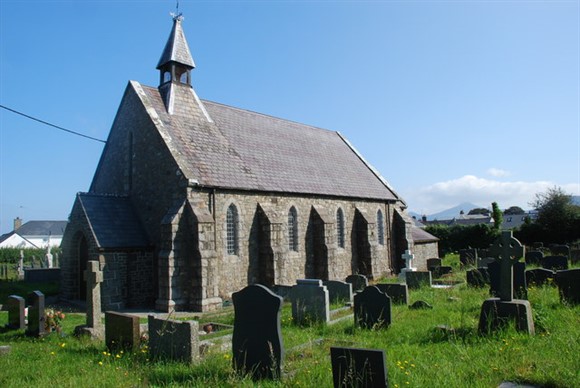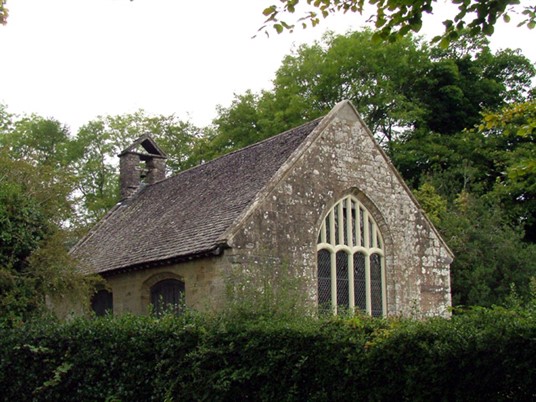Posted on 09/08/2017 by David
Continuing our historic churches blog series, we've got two very different but equally fascinating holy places to share with you for this week.
For centuries, North Wales has been an important place of worship, evidenced by the abundance of holy sites across the region, dating back thousands of years. From ancient burial sites and stone circles to island monasteries and pilgrimage routes, the variety and concentration of sacred places in a relatively small area is quite astounding.
Religious sites can tell us a lot about a region’s history. Though many of the churches have been rebuilt, it’s still often possible to find remnants of the original buildings, artefacts within the grounds and other interesting relics nearby that tell stories and offer unique snapshots of life through the ages here in North Wales.
The two churches we’re featuring today illustrate exactly those points. Renovations at both sites have unearthed some incredible and unexpected finds....
1. St Mary's Church - Nefyn

Old St Mary’s Church in Nefyn, a small town on the Llyn Peninsula, is home to the Llyn Maritime Museum. The museum was founded by the local community in 1977, to tell the fascinating stories of the many ships that were built locally, as well as brave local sailors and captains. The graveyard surrounding the church is the final resting place of many local mariners.
The museum and the church were forced to close in 2000 due to health and safety concerns, but the community came together to apply for grant funds to renovate and reopen the church and museum.
An unexpected discovery....
When the renovation work was being undertaken during 2013, workers unearthed a medieval cist grave, complete with fully intact human skeleton! A truly incredible find.
Cists are stone-lined graves characteristic of early medieval period, but rarely found intact. The skeleton, which was found to be a female of around 60 years old, has provided an incredible insight into life in North Wales in the early 13th century. Bones are generally poorly preserved in the area, so archaeologists were able to use this skeleton to glean a wealth of information - right down to what her diet was like, and where she was brought up!
The dig also uncovered some structures indicating that a monastery-type building may have been located at the site too.
Investigations by archaeologists and historians are still being carried out at the site, and the Maritime Museum is going from strength to strength. It is home to over 400 maritime artefacts, with new donations coming in all the time. It’s a great place to visit and discover a treasure trove of fascinating, lesser known history associated with the area.
2. Gwydir Uchaf Chapel - Llanrwst

This ‘secret’ chapel is brimming with history and features an array of hidden Tudor treasures. Not easy to find, but well worth the effort. Be sure to contact the owners of Gwydir Castle beforehand to get the key!
Imagine being so wealthy, that you could build your own personal chapel on the hillside - and hire your very own chaplain to deliver your services!
Well, that’s exactly what Sir Richard Wynn did. He was the 4th Baronet of Gwydir, so he had plenty of money available to have his very own chapel built, so the project was commenced in 1673. Back in the 17th century, it was actually quite common for Welsh gentry to have their own places of worship built.
Now, this little chapel is almost forgotten. It sits up on the hillside, hidden in the overgrowth of Gwydyr forest.
Though it appears fairly plain on approach, constructed in a classic Gothic style, inside you’ll discover a spectacular painting on the ceiling. It’s almost like a miniature Sistine Chapel, with an intricate depiction of God, the moon, stars and angels, and doves, all hand painted and beautifully preserved from when it was painted over three hundred years ago.
There are more surprises to discover too. Head back outside and discover an Elizabethan garden, a bowling green and a ziggurat (a terraced stone structure), which were only re-discovered in 2003 when a group of school children were clearing up the site.
The ziggurat is a spiral maze-like path that winds up to a viewing point, looking across the Conwy Valley below. It’s a very rare find and is a delightful surprise that rewards those who take the time to find the chapel hidden up on the hillside.
Do you know of any sacred or holy places in North Wales with interesting or unexpected stories? We’d love to feature them in future blogs! Do let us know if you visit either of these churches and what you thought of them, you can even share your photos with us on Twitter using @NWHC.
Click here to read part four in the series.
Images courtesy of: St Mary's Church by Alan Fryer, 2001, via Wikimedia Commons. Gwydir Chapel by © copyright Nigel Williams and licensed for reuse under the Creative Commons Licence.

